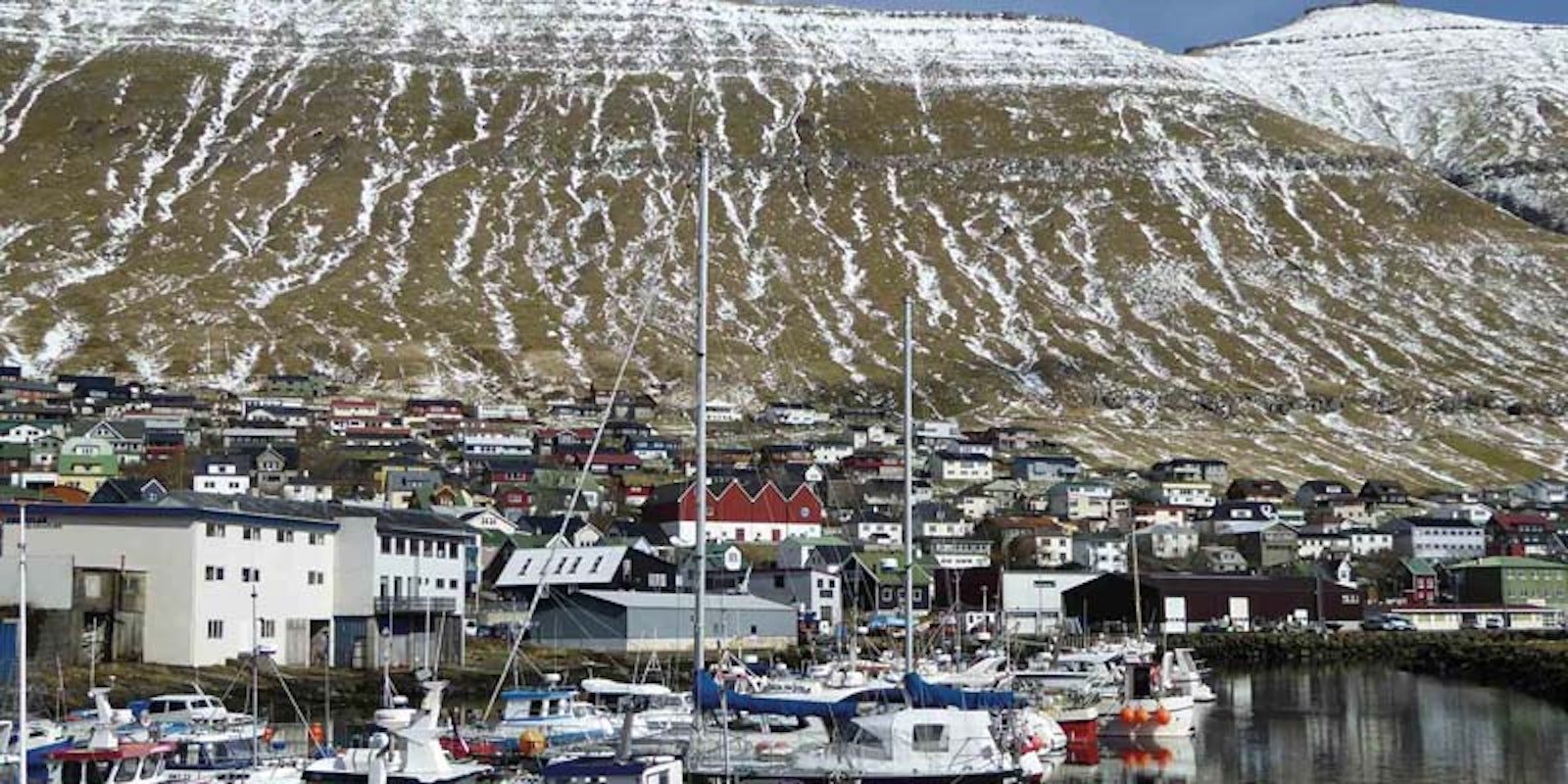I’ve always said that I would travel anywhere as long as it is somewhere new. Experiencing new things and places is the best way to open the mind, but unfortunately for many of us, the time, money, and other resources required to venture across the globe are often scarce. Luckily for us, PieceWork can take us on little adventures just within its glossy pages.
Faroese sheep take to the road. Photograph by Kathy Troup.
From the sheep that populate the Faroe Islands to the Hispanic heritage of the colcha to a Southwest American-inspired scarf, reading through PieceWork’s March/April 2017 issue felt like taking a trip around the world and gaining knowledge every step of the way.
I traveled to England, France, and Italy on a student trip at age 14, but I just can’t count on 10-year-old memories to fulfill my sense of wonder. For many years, I have longed to return to Europe, so Kathy Troup’s "On the Sheep Islands: Faroese Knitting" in this issue was especially captivating. Though the Faroe Islands are a self-governing nation within the Kingdom of Denmark and not actually a part of the European Union, the islands sit midway between Iceland and Norway and are just as enchanting as any official part of Europe.
The knitted edgings from Weldon’s Practical Needlework, Volumes 2 and 5.
Troup describes the rugged hills of the islands, softened by a thin blanket of powdery snow upon her arrival, with such clarity it feels as though you are there beside her. The article’s photos of the sheep that populate the islands at a higher density than humans place you on a narrow, winding road in the islands, waiting for a line of sheep to make their way across. Not only does PieceWork take us to new lands with this piece, but it also takes us back in time. Troup explores the historical yet ever-present manifestation of knitting on the islands. In a land so dense with sheep, the resources they provide have long been utilized. In the 18th century, woolen products were the main traded goods in the Faroe Islands. Men, when not out to sea, would card and spin wool, and the women would knit products. Though not as prevalent today, knitting is still a large part of Faroese culture.
This is particularly clear with the gigantic knitting festival held every April on the islands, which Troup herself attended. The town of Fuglafjørður blooms to life as knitting cafes pop up everywhere. Even the bank transforms into a knitter’s paradise. Classes are held in homes, and the Faroese people even welcome guests to stay with them. Hundreds gather and exchange conversation at Fuglafjørður’s large community hall, which is the center of the festival. Troup says that it is impossible to know the full extent of the warmth and friendship present at the festival unless you go there yourself, but this piece provides us with a pretty good idea.
So if you’d like to get a taste of Faroese knitting and learn more about the history of the islands, be sure to read the March/April Issue of PieceWork. You might even find yourself on a journey back to Victorian England with Katrina King‘s favorite borders and edgings from Weldon’s Practical Needlework; to the Great Depression with Virginia Woods Bellamy’s handknitted Puffbunny Wardrobe; to Mara Bishop Statnekov’s hometown of Santa Fe and other areas of the American Southwest as they inspired the Santa Fe Turquoise Trail Scarf seen on the cover.
Although my traveling bucket list has expanded for every piece in this issue, my quest for knowledge has been temporarily satisfied. So take an armchair travel trip of your own, and learn a thing or two with the March/April Issue of PieceWork.
—Jenna
P.S. If you are interested in rare sheep breeds, be sure to check out PieceWork November/December 2011, pages 34-37.



